
It is powered by a 1.6 liters turbocharged unit that delivers 218 hp.
The main performance figures are a top speed of 235 km/h and a 0-100 km/h sprint in 7.0 seconds.
The concept
The aim of Peugeot’s design team “was to build a vehicle with a strong
focus on driving pleasure and the associated
emotions, a vehicle that was light and efficient
while at the same time environmentally friendly.”
The brief also provided the source of inspiration for the
theme of the 4th Peugeot design competition (P.L.E.A.S.E).
 |
 |

Special components include two aluminium roll
over protection bars that separate the passenger
compartment and give shape to the exterior
styling, the polycarbonate rear
windscreen and a large number of carbon fibre
body parts.
The Design
With a length of 4.276 (same as the hatchback),
a width of 1.840 (25 mm more than the hatchback)
and a height of only 1.320 m, the proportions of the
308 RC Z concept car combines a very dynamic
design with a high level of road holding.
The particularly stylish design of the front of the
308 blends brilliantly with the proportions of this
concept car.
 |
 |

can truthfully be called the «nose of the bonnet».
From here, the style lines flow upwards back over
the bonnet and into the two polished aluminium
roll-over protections bars.
This flowing «V» profile gives the vehicle its shape and creates an
impression of movement in all positions.
Visually, the fluidity of the design is further
enhanced by the way the large tinted front
windscreen, the carbon fibre roof panel and the
polycarbonate tinted rear window are combined
together.
The “feline-like” front headlights extend along the
line of the bonnet.
 |
 |

lights» each which create a bright and piercing
beam of light. These “cylindrical lights” are clearly visible due to the clear glass headlamp lenses.
The lower front panel differs from that of the
308 hatchback. It has a sharper and sportier
shape with a single air intake and integral front
fog lamps, while the front grille features chrome
detailing.
From the side, the vehicle displays a strong
profile with its prominent front wings, deeply
sculpted sides, and particularly generous rear
wings.
The doors raise the visual profile, creating
a link between the sloping front design and the
curvaceous rear design.

suggests power, strength and dynamism, like an
animal ready to pounce.
The specific shape of the rear window required
the use of polycarbonate instead of glass.
The two curved sections emerging from the
roof give the vehicle an original appearance and
contribute greatly to its aerodynamic efficiency.
The design of the tailgate assists the airflow over
the rear of the vehicle, while the shape of the rear
of the vehicle provides sufficient down force onto
the rear suspension to eliminate the need for a
rear spoiler.
The Peugeot Lion badge is displayed in a
U shaped panel in the centre of the tailgate, and
is backlit at night. In addition, by pressing
the lion badge, opens the tailgate.

wide rear wings. Fitted with light emitting diodes
(LEDs), they have a ruby red fi nish combined with
a stylised translucent section which contains the
direction indicator.
Two centrally mounted exhaust pipes are
integrated into the wraparound lower rear panel.
To achieve this, the rear exhaust silencer has
been located in a transverse position where it
also serves as an aerodynamic diffuser, but still
allows sufficient space for the storage of a spare
wheel.
The rich metallic grey exterior body paint is
created by a special process using finely milled
metallic particles. This gives the impression that
the vehicle has been formed from a single block
of metal, thus enhancing the styling of the bodywork.
Interior Design

taken directly from the hatchback.
A fluid design that allows a particularly clear view
of the outside thanks to its sloping design which
complements the vehicle’s large front windscreen.
It offers a high level of interior brightness, improved
visibility and an overwhelming feeling of space.
The entire fascia panel is trimmed in leather, while
the use of chrome, aluminium and black lacquered
fittings creates a sporty, upmarket impression.
A Bell&Ross® clock has been
placed in the centre of the fascia panel, between
two air vents, its typography matching
the background of the instrument panel located
in the driver’s line of sight.
 |
 |
 |

aluminium eyelets, the style of which is also
reflected in the design of the inner door panels.
At the rear there are two occasional seats
trimmed in leather, both of which can be folded, thus offering versatile space for luggage.
The length and maximum
available boot volume can even accommodate a
mountain bike.
Technical features
The 308 RC Z concept car is powered by a
1.6 litre THP engine derived from the EP6DTS
unit developed by PSA Peugeot Citroën and
the BMW Group.

a maximum power of 160 kW (218 bhp), with an increase of 33 hp compared to the production engine that equips the 207 RC. The max torue is 280 Nm (300 Nm in overboost).
Among the engine’s features are the Twin-Scroll turbocharger and the high-pressure direct petrol injection system.
The engine is coupled with a new
6 speed manual gearbox.
The rear suspension, derived from the hatchback,
consists of a torsion-beam, two rear suspension
arms and an integral anti-roll bar. The front and rear tracks
have been increased by 59 mm compared to the
hatchback.

ventilated discs at the front with four piston
calipers.
Polished split rim 19’’ alloy wheels are fitted with
Michelin Pilot Sport PS2 245/40 R19 tyres.
Safety equipment includes
Lane Departure Warning System (LDWS),
the directional bi-Xenon headlamps, three impact
absorption structures at the front, «Peugeot
Emergency» service linked to the vehicle’s RT4
telematics system.
“Like all concept cars, the 308 RC Z is an amazing
laboratory of ideas making it possible to design
and test new concepts and pioneer technical and
styling ideas free from the constraints of volume
production.”
 |
 |
 |
Peugeot 308 RCZ – Technical Specifications
| DIMENSIONS (m) | |
| Overall length | 4,276 |
| Overall body width | 1,840 |
| Kerb height – with full tanks | 1,320 |
| Wheelbase | 2,608 |
| Front/rear overhang | 0,926 / 0,742 |
| Front/rear track | 1580 / 1580 |
| Boot capacity in litres of water | 415 |
| KERB WEIGHT with full tanks (kg) | 1200 |
| SCx Drag area (m2) | 0,65 |
| ENGINEEP6DTS-Euro 4 | |
| Capacity (cm3) | 1598 |
| Maximum power kW (bhp) | 160 (218) |
| Maximum torque (Nm) | 280-300* |
| TYRES | |
| Type | Michelin Pilot Sport |
| Dimensions | PS2 245/40 R19 |
| TRANSMISSION | 6 speed manual gearbox |
| PERFORMANCE (driver only) (s) | |
| 0 to 1000 m | 27,0 |
| 0 to 100 km/h | 7,0 |
| 80 to 120 km/h in 5th gear | 7,5 |
| 80 to 120 km/h in 6th gear | 9,5 |
| Maximum speed (km/h) | 235 |
| CONSUMPTION (litres/100 km) | |
| COMBINED | 6,7 |
| CO2 (g/km) | 160 |
| BRAKING – Brembo | |
| Disc diameter (mm) | 360 |
(Source: Peugeot)

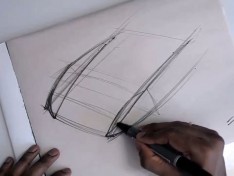
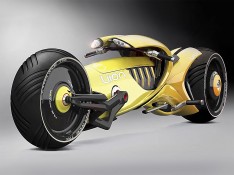
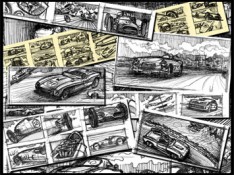
 share on Buffer
share on Buffer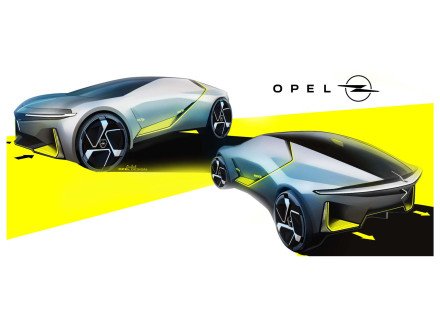
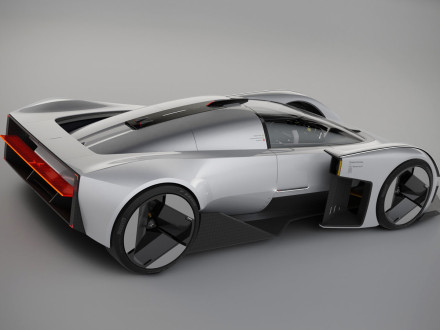






Comments